Man gets into cage surrounded by sharks. There was only one way out.
Science
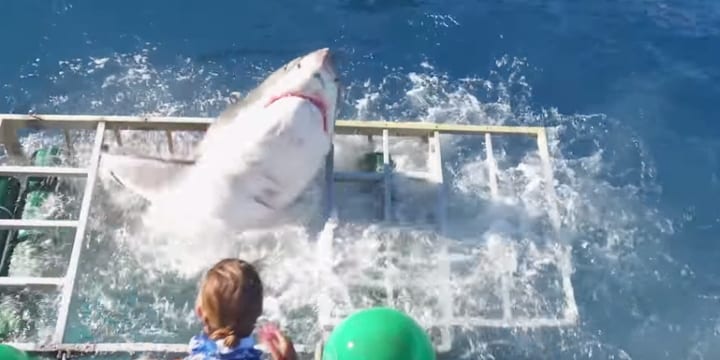
1. Mr. Ming
YouTube
Sharks are amazing creatures. They can swim at amazing speeds. They are apex predators. And they have razor-sharp teeth that are specialized to grip, strip, and slice through the most leathery of meats. But they’re also one of the most viewed. And sometimes these viewings go wrong. And that’s the trouble faced by this unexpecting cage diver. He met a shark, and the result is this terrifying story.
The diver who narrowly escaped the frightening situation was Chan Ming, an advertising executive in Shanghai. An experienced diver, he had come along on this trip to experience more of the great white beasts that lurk beneath the waters of the Pacific. At age 51, this is quite the ambition to posses.
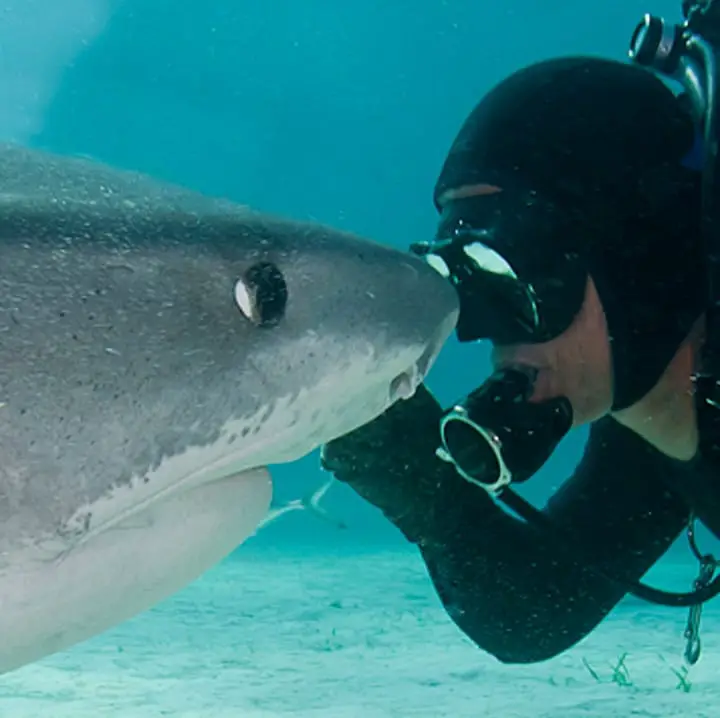
X-Ray Magazine
Mr. Ming is a scuba instructor in his spare time, so he’s not totally lost when peril comes knocking. In this instance, however, he was likely unprepared. What would happen to him on this day would change his life forever more. When you read what happened, you should try and ask yourself what you would have done.
2. The tour
The excursion was a five-day-long tour to get a better grip on the great white habitat. Since these creatures roam huge expanses over the course of several days, this territory is quite large. This tour specifically took these people to the Guadalupe Islands. The islands are considered one of the best places in the world to see the creatures, so it appeared a wise choice.
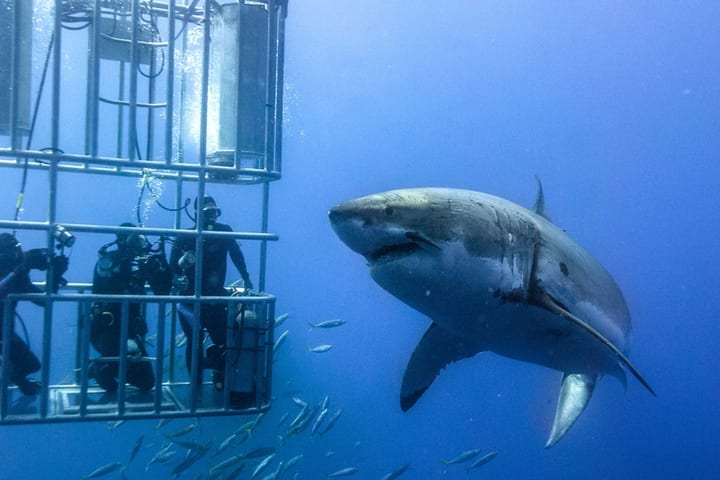
Beyond Touring inc.
During this dive, there was something like four or five great whites that came to encircle the cages to be submerged. The chumming, in other words, was effective. Now the question is this: was Mr. Ming going to stay safe? Were the bars of the steely-cold cage enough to protect him from the hungry apex predators beneath?
3. Is cage-diving safe?
Cage diving, in a rather self-explanatory way, is the act of submerging yourself into the water while a dangerous or near-dangerous animals swim by. The cage, in most instances, is designed to protect you from whatever beast may lurk nearby. In the case of shark cage-diving, that animal is usually a shark.
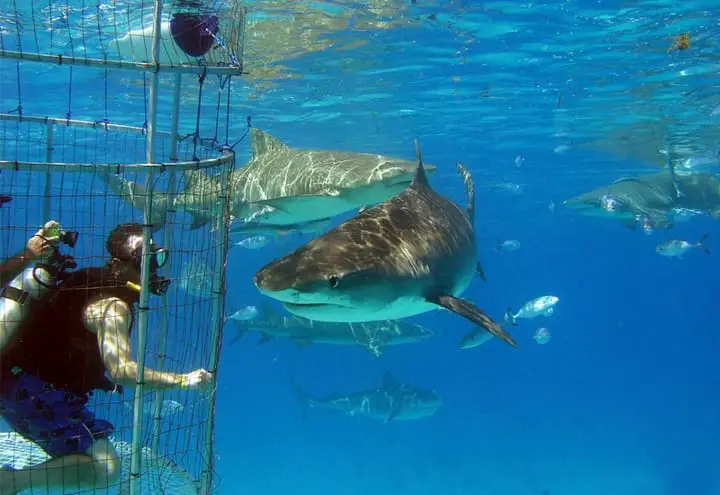
Pursuitist Luxury
In many cases, people often seek out great whites specifically. This is for obvious reasons. The cartilaginous fish is great, big, and terrifying. And since the Guadalupe Islands are one of the most popular places in the world to encounter this predator, that’s where they went. But sometimes the cage doesn’t work as intended.
4. A shark on the attack
It didn’t take long for Ming’s expedition to go south. One shark in particular—a 13-foot adult—was especially temperamental. And not only that: it didn’t seem to really understand that there was a cage there. Or, if it did, it only understood it with the capacity of an evolutionarily ancient cartilaginous fish.
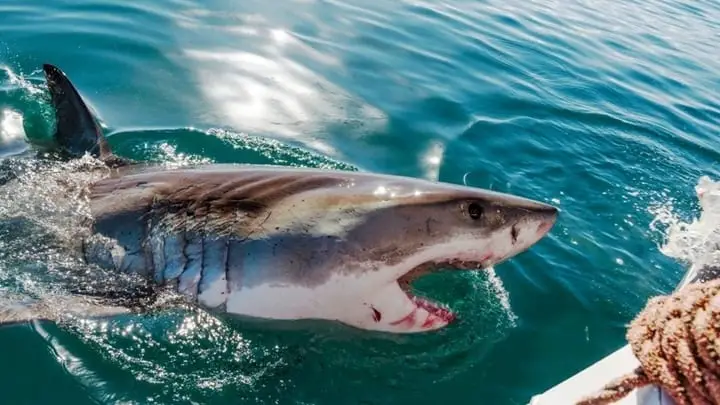
Fox
After a few moments in the water, this shark was clearly going to cause problems. And why was that? Well, because it charged headlong into the cage—and more than once. Now, normally this wouldn’t cause a problem. But today that was going to change. The conditions on this particular moment were not those conducive to the well-being of Mr. Ming.
5. Apex predation
Just to get a grip on the terror you might face if you were to come face to face with a shark, we want to prepare you with an understanding of the tools they’ve evolved. These tools include things as dangerous as teeth specialized for gripping, gnashing, and cutting, and a grey camouflage upper-coat that makes them nearly invisible to those who swim above.
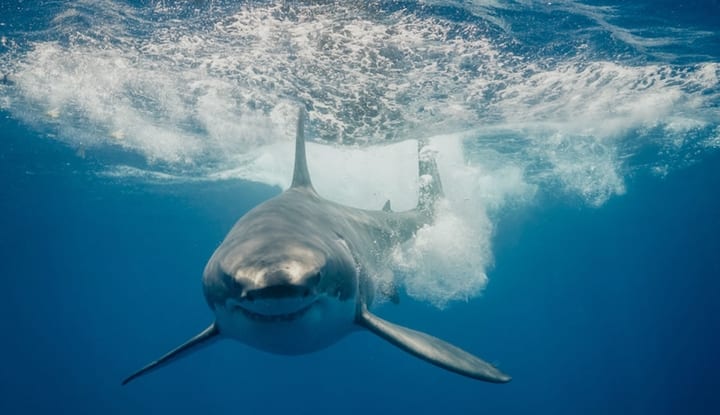
Horizon Charters
Other terrifying things include the shark’s speed within the water. They can swim at speeds up to 15 miles per hour, for instance. Michael Phelps, conversely, can only swim at short bursts of around 4.7 miles per hour. If your plan is to outswim these aquatic beasts, then you should find this disconcerting. You won’t stand (swim?) a chance.
6. The cage
The cages meant to defend against these sharks isn’t something that easily gives way to the torpedo-shaped beasts. The cage is metal and structured such that it can withstand bites and rams by these large predatory fish of the sea. But sometimes the structure of the cage underestimates the power of the great white.
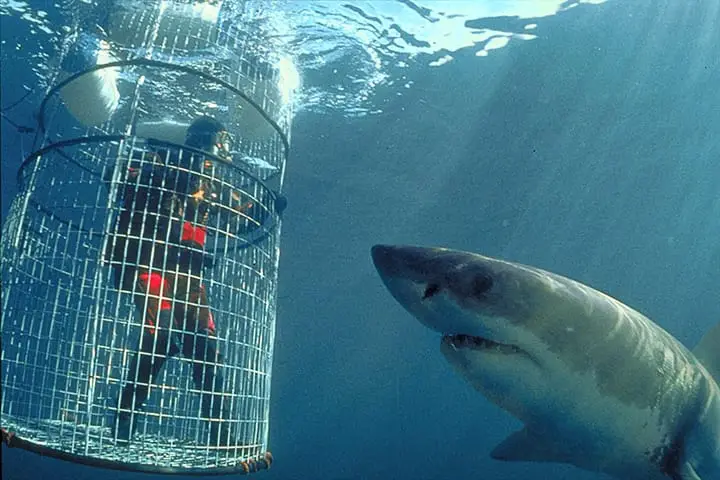
Photo Aesthetics
The great white has a jaw bite pressure that can, on occasion, break through these steel cages. This unfortunate truth has been a concern of many prospective cage-divers. But within that small subset of the population that is undeterred, most go by unscathed. In Mr. Ming’s case, the outcome wouldn’t be so clear.
7. Breach
The incidents in which a shark breaches a cage are, thank goodness, very few. There have only been a handful of reported cases, and among these even fewer where the diver in the cage suffered any fatal wound. And because of this, the activity is still considered relatively safe for the prospective thrill-seeker.
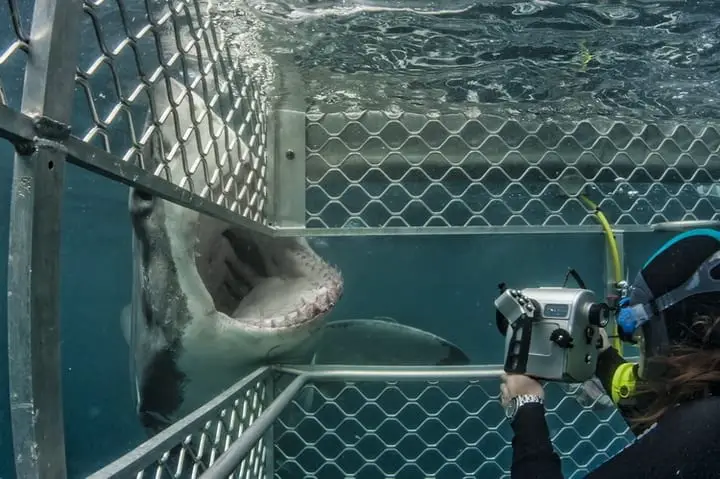
Indo-Pacific Images
This is where the father of Gabe and Garrett, two brothers from California who host their own YouTube channel, comes in. While filming his experience cage-diving off the Guadalupe Islands, he captured one of the most jarring scenes you could imagine—some of which will leave you wincing in fear. They involved Mr. Ming.
8. Shark enters cage
Let’s name this shark. We’ll call it James. James is often misunderstood. Sometimes, when he’s just looking for chum, he finds himself in rotten situations. This is one of those times. Having charged somewhat a little too hard, James found himself swimming through the tight bars of the cage.
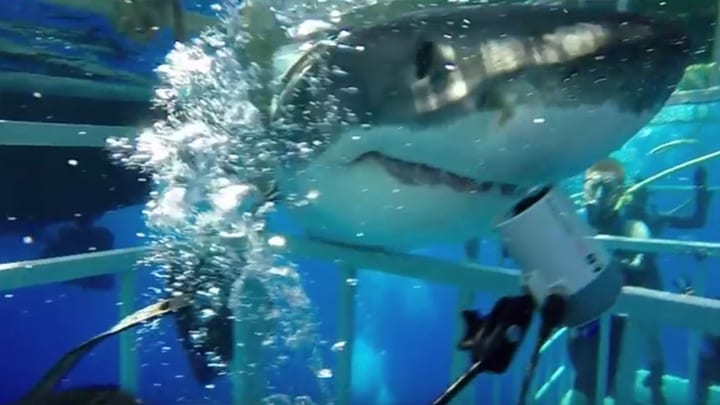
RT
Now, you should understand that sharks aren’t like mice. They can’t, in other words, collapse their skeleton. So while a mouse could squeeze through the most narrow crack in your doorway, the shark has no such luxury. This didn’t stop James from getting a little too close to Mr. Ming. And let’s just say Mr. Ming was not happy about what happened next.
9. Sharks can’t swim backwards
Now, another thing you have to understand about sharks is that they can’t swim backwards. So while you or I could reverse our direction if we found ourselves in a similar rotten situation, the great white can do no such thing. So, if it were to find itself swimming forward through a diver’s cage, something will have to give.
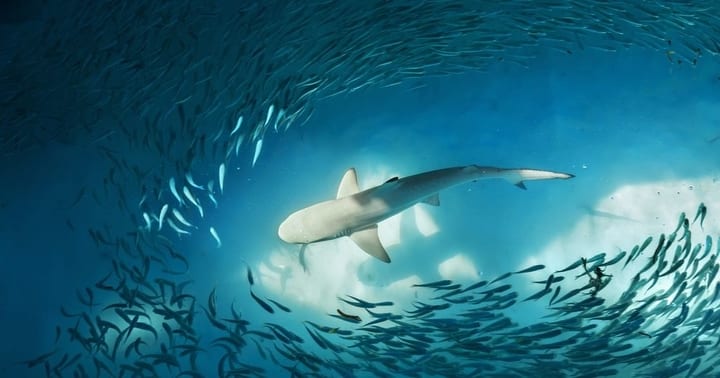
Wolrd Atlas
In this instance, that give was the cage. The shark broke in, and Mr. Ming found himself much closer to the apex predator than he ever likely expected. So now, you ask, what happened to Mr. Ming? Was the chum not enough for James to feel satisfied? Did the hungry and panicked shark turn to attack?
10. When sharks attack
Annually, there is something like 100 shark attacks per year. Of these, around half are from great whites. While many of these attacks are not deadly, an unfortunate few are killed by these powerful beasts. The great whites are thought, in a majority of these cases, to merely be “sample biting.” Because of this, they don’t fully attack the animal they bite.
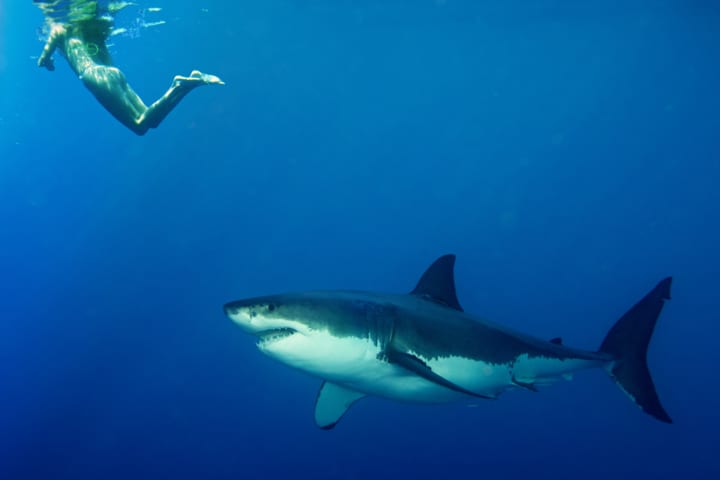
Today I Found Out
But once they know that what they’ve tasted is something they want to eat, they hold no reservations. These predators have millions of years of evolution under their belts perfecting the art of the underwater attack. When these attacks are accidentally aimed at humans, the result is unfavorable. So what, you ask, happened to Mr. Ming?
11. An escape?
The cages on this particular expedition were constructed such that there was an escape hatch. If things were to go south, then, Chan Ming should be able to escape. There is, however, an element of fight or flight that might hinder the ability for one to make such clear-minded decisions.
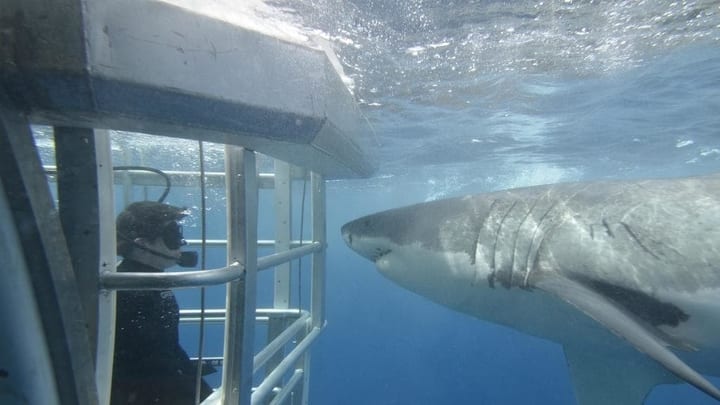
Escape
The question, then, is this: was Mr. Ming’s scuba-diving pastime enough to get him through that hatch in enough time to allude the great white beast? This task becomes especially daunting when one considers that Ming had on an entire outfit of encumbering scuba gear. This doesn’t exactly make him nimble.
12. Yes, an escape
Chan Ming, fortunately, managed to escape through the bottom of the cage safely from his new friend James. So now, just to clarify the scene: frightened people above were standing by watching with fear in their eyes as this giant great white came barreling into Mr. Ming’s cage. Many weren’t even sure if there was a diver in there.
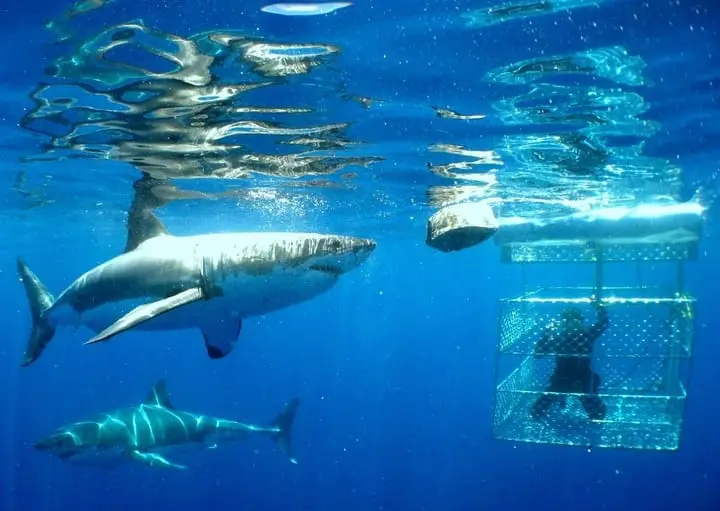
I Love South Africa Blogger
Then they watched as it forced its way into the cage. Mr. Ming, without anybody even knowing, managed to maneuver himself out of the cage. But, as everyone on the boat was most definitely aware, they were off the coasts of an island with one of the most abundant great white populations around. And not only that—the water was freshly chummed.
13. Baiting
To get sharks to approach the cage, the fishers on the boat will bait them in. They normally do this with a giant chunk of meat—something the sharks would normally eat. But sometimes they don’t use meat, luring the sharks in with the mere scent of food. This nasty trick has got to be something that the sharks find annoying.
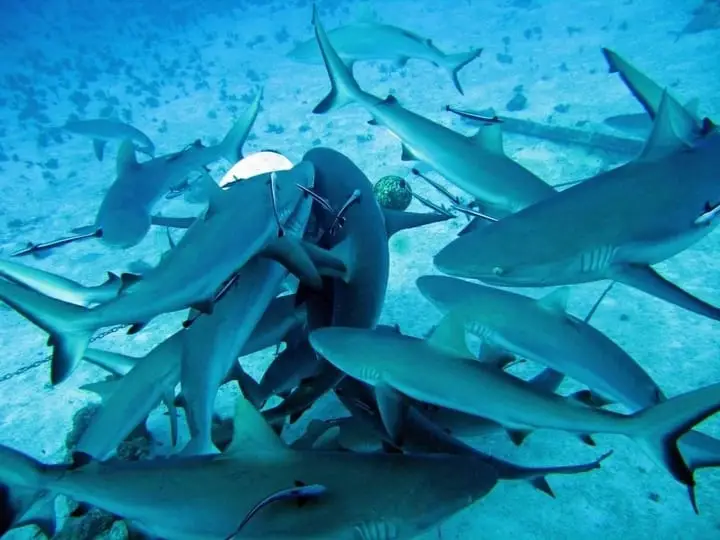
Front Line
What’s especially disconcerting, other than the fact that this lures a handful of hungry sharks, is that is thought to associate humans with food. When there are humans around, in other words, there is also tasty meat. So now, Mr. Ming is in the water with a handful of hungry sharks that might consider him food. He wasn’t exactly happy about this.
14. Mr. Ming meets more sharks
Now, safely out of the cage and into the waters beneath, you would think Chan Ming would be okay. Unfortunately, this was not the case. There were, in other words, a few other sharks to deal with. Encircling the cage around Mr. Ming were two other giant great whites. And they were hungry.
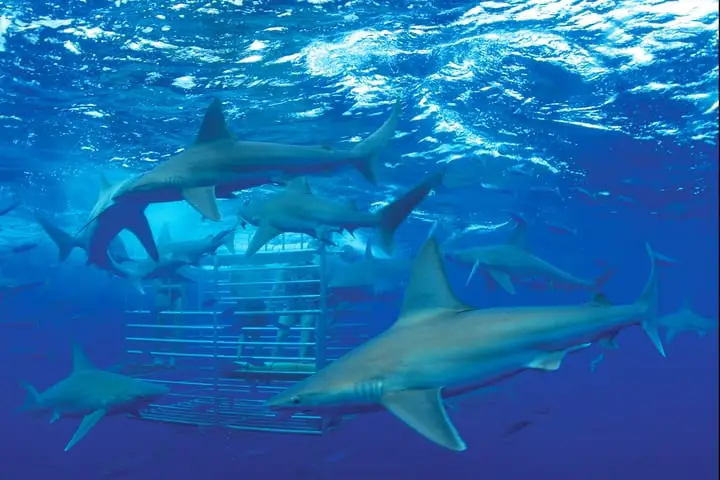
HAWAII Magazine
Mr. Ming, then, had much to worry about. Again, many people didn’t even realize that someone was in the cage. This is especially problematic considering that many were panicked by the shark entering the cage. So now Ming is in the water surrounded by chum and feeding-frenzied sharks. To make matters worse, everybody on deck is panicked and uncertain as to what is happening.
15. Shark escapes cage
James, our friend the shark, managed to escape the cage. One of the tour guides had opened the cage’s top to enable the shark—or Mr. Ming, if he had the cerebral wherewithal—to escape from its unlatched hinges. It was the struggling shark, however, that made it through this most restrictive of areas.

YouTube
So now Mr. Ming has to contend with at least three sharks—one of which is clearly panicked from its excursion into and out of the cage. Underwater, would he find his way to the bow of the boat, or he would succumb to the same fate as the chow around him?
16. Moments later
Mr. Ming, fortunately, made his way out of the water and onto the boat. He was, in other words, safe and unbesmirched by the teeth of the sharks. While he may have smelled a little chummy, he didn’t become chum himself. And for this he was likely thankful.
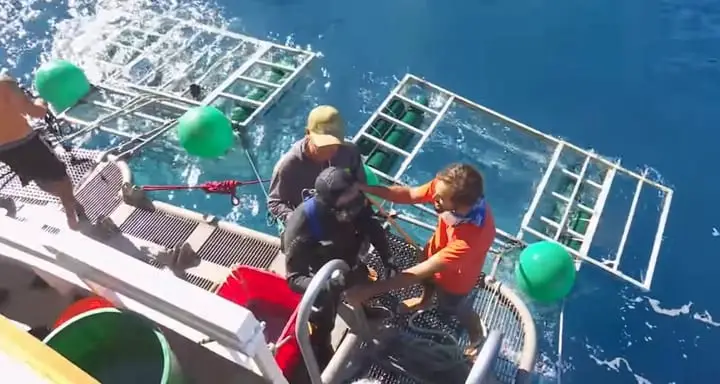
Evening Express
When asked about his dive into the shark-infested waters, Chan described how he didn’t really have time to process the events. As soon as he saw the shark wriggling its way into his cage, he knew to drop out and avoid. And this is exactly what he did. And he did so well enough to avoid the shark completely.
17. Guadalupe Island
Guadalupe Island is both a tropical paradise and nightmare for the person afraid of sharks. Located in the warm waters off of the Mexican Baja California peninsula, this place is heavily trafficked by some of the ocean’s largest beasts. The island itself formed from a now extinct mid-ocean ridge, an underwater mountain range formed by two colliding tectonic plates.

Caribbean360
These plates formed the two shield volcanoes that make up the island. But it’s around this island where our diver friend encounters one of the most terrifying beasts of the sea: the great white shark. The number of giant great whites swimming around the island is just as large as it is terrifying. These are the sharks he had to deal with.
18. A great white habitat
The wildlife surrounding Guadalupe Island makes sense of its popularity with the sharks. For one, it’s home to the Guadalupe fur seal. And sharks, in case you didn’t know, really like to eat seals. It is this fact that often leads the occasional surfer to succumb to the shark’s bite. They do look a lot like seals, after all.
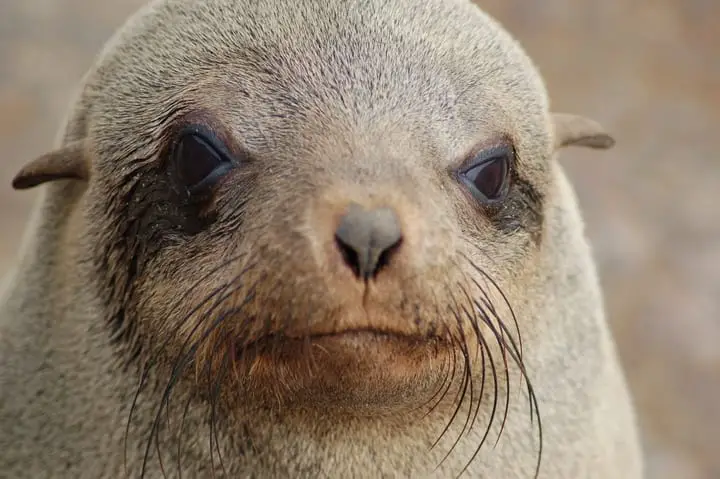
Rock, Paper, Shotgun
The island is also home to the northern elephant seal, making it an even more lavish environment in which the great white can live. Because of the island’s variegated assortment of flora and fauna, the loculation was established as a biosphere reserve on April 25, 2005. But with all this variation comes sharks. And with sharks comes a greater number of shark attacks.
19. Diet
Among the things that sharks enjoy eating includes most of the macroscopic things you can find in the ocean. This long list includes animals as varied as the tuna, rays (stingrays and manta rays, etc.), smaller sharks, and cetaceans like whales and dolphins. But it also includes the occasional diver, surfer, and Arizonian tourist.
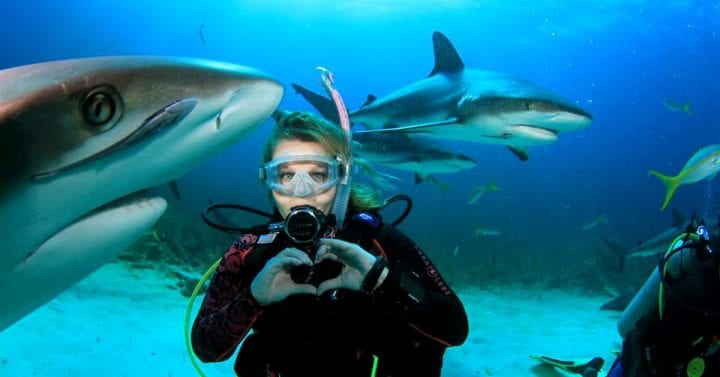
Scuba Diver Life
And, of course, they also eat a variety of pinnipeds, including the seal and fur seal. But they even go beyond that to eat turtles, otters, and seabirds. The moral of the story is this: if it lives in the ocean, it is likely eaten by the great white. This is why people sometimes get into cages to see them. The problem is when these cages don’t work as intended.
20. Shark attacks on the global scale
Shark attacks aren’t as common as many think. In a year, there are something like 80 to 100 unprovoked attacks. And within these, only a fraction are deadly. As mentioned earlier, sharks mostly perform a little taste test prior to embarking on a full scale attack. They are somewhat akin to black widows and the like, then, in that they don’t inject you with a full sting until they know for sure you’re trouble.
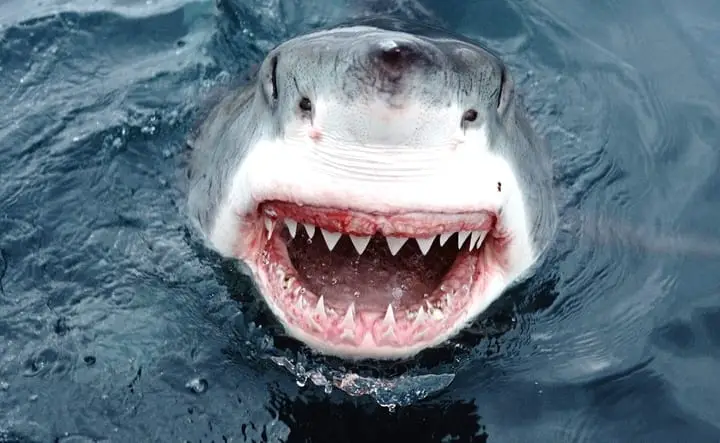
Dantania
While this doesn’t mean the great whites aren’t deadly, it does mean that they aren’t necessarily on the lookout to attack. They might, in other words, consider you just a harmless and untasty creature of the sea. For many, this would be enough to leave you along.
21. Swimming with sharks
Some people, for instance, have swam with sharks as a fun and intriguing pastime. This jarring and seemingly death-wishy experience isn’t for the faint of heart. In fact, it’s probably not for anyone but the most reckless and careless. In this instance, that person was a shark expert. Who would have thought?

Ocean Ramsey
Ocean Ramsey, a biologist studying tiger sharks in Oahu, Hawaii, encountered the shark (the biggest around) while performing routine tagging monitoring the number and identity of sharks in the area. During this routine documentation, she encountered what was the biggest great white in history—coming in at an astounding eight-feet wide.
22. A dangerous beast
Ramsey has dedicated her career to preserving the sharks of the ocean. The hope was hunting and other activities that diminish the number of sharks in the ocean will stop. And swimming with the giant beasts in their natural habitat is a great way to do this—although it’s probably not recommended for everyone.
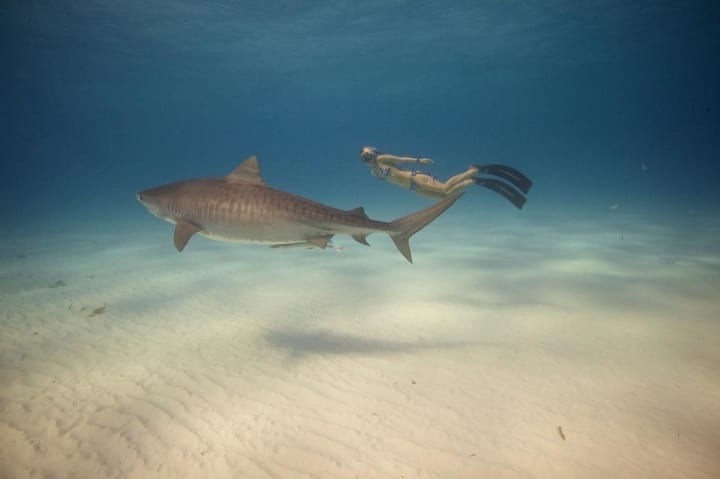
InspireMore
Swimming next to a shark with a girth that is wider than you are tall is, let’s just say, greatly unsettling. The shark could, in other words, fit you standing completely erect safely within the bounds of its stomach. Because of this massive girth, many suspected the shark to be full or pregnant. Maybe it was both.
23. The megalodon
Even though this shark may have been huge, it was tiny compared to some of the sharks that existed in our Cenozoic past. One of these sharks was the megalodon, the largest shark ever to roam the seas. Coming in at a staggering 60-feet-long, this thing was quite the beast to contend with.

YouTube
Just so you know: 60 feet in length is about equivalent to the length of an entire bowling lane. That’s pretty long. If you were to chum an area of the sea and expect to cage dive with this bad boy, you might want to think again. It wouldn’t take more than an open mouth to swallow you—and the cage—whole.
24. What makes it large
For animals of the sea to grow as large as the megalodon, they have to undergo one of two evolutionary trajectories. They can either (1) go the route of whales and like, becoming filter feeders, or (2) become massively predatorial. The latter of these two trajectories is what the megalodon took.
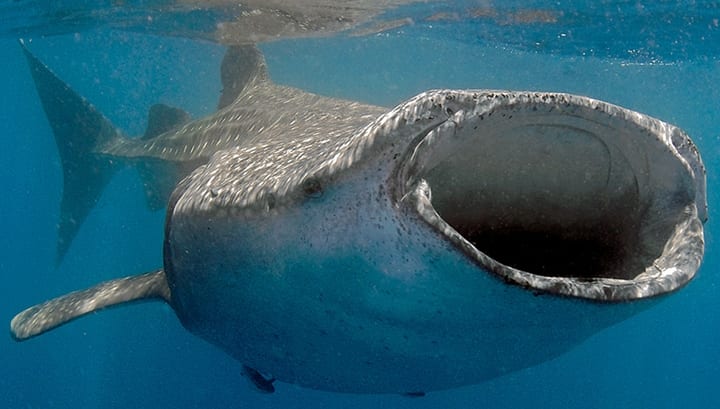
The Why Files
To simplify: giant mass requires a source of growth. In the case of whales and other large oceanic creatures, this source is plankton and other small critters that lurk near the surface light of the ocean. For sharks as massive as the megalodon, the source is a lot of other really large creatures of the deep.
25. Manufactured fear
Many TV shows and movies try to capitalize on people’s fear of sharks. This capital is easily generated, as giant beasts with serrated teeth easily inspire fear. Movies like Jaws, for instance, are notorious for inspiring an irrational fear of sharks. And this fear has led to an uptick in the hunting and killing of these great oceanic beasts.
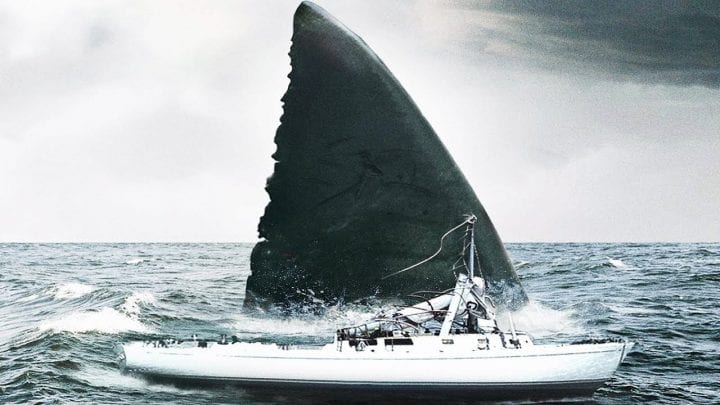
YouTube
While many recognize these fears to be bloated nonsense, many others don’t. And while sharks are in fact dangerous (especially if you’re trying your hardest to look like a tasty seal), they aren’t dangerous enough to inspire the fear that they do. This is important to note, giving that so many sharks are killed because of this very fear.
26. Discovery Channel drops the ball
Other companies, in a shameless attempt to generate traffic and revenue, piggyback on the baseless claim that creatures like the Megalodon still exist. One of these companies, regrettably, is the Discovery Channel. Peddling what is widely regardless as pseudoscientific garbage, the show has a “documentary” that claims to follow the lives of scientists following this shark.
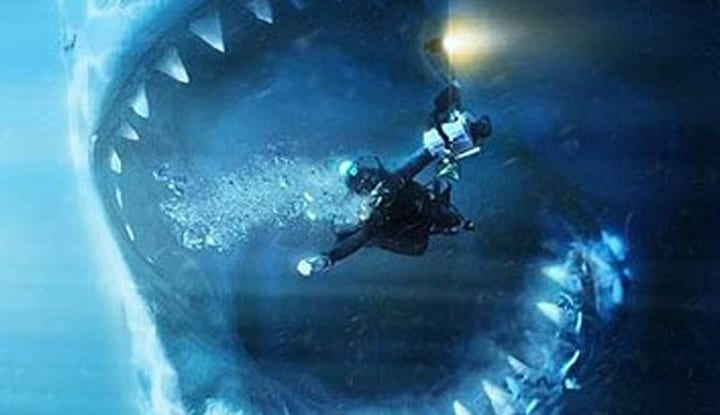
Section 51
Unfortunately, there is no actual evidence that the shark still exists. In fact, all the evidence points in the opposite direction—that it went extinct around 20 million years ago. So while these shows might be entertaining, they are composed by pseudoscience peddlers and actors unprincipled in anything science.
27. Alive in South Africa
South Africa is home to all sorts of things. It hosts many safaris, for instance, including places like Kruger National Park and the Sabi Sand Game Reserve. But other than that, it’s home to many creatures of the deep. It is, in other words, a place commonly explored for their abundant shark populations.
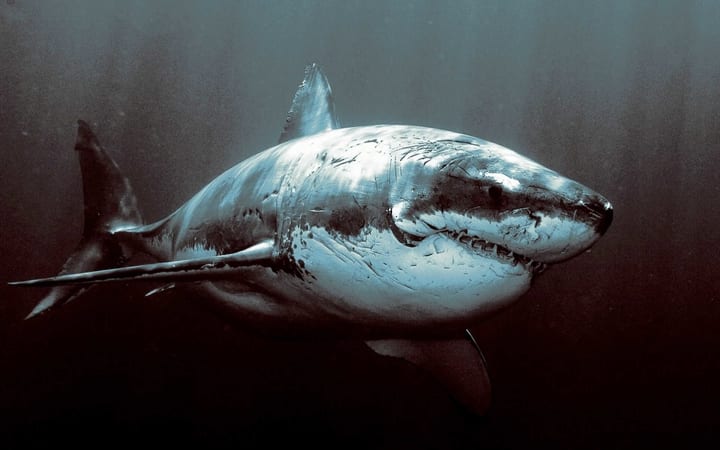
Reddit
Unfortunately, it is also home to fictitious claims about megalodon sightings. And these are the claims upon which the scurrilous Discovery Channel show was based. You ought to be skeptical, then, of any spurious claims coming from the region. They are likely false, and not worth their weight in salt. They’re not worth anything actually.
28. Great whites can jump
The great whites are extraordinarily interesting creatures. Other than their specialized teeth and ability to strike fear into the hearts of most ocean dwellers, the sharks are also the only sharks that can jump from the water. This is amazing considering their lofty size.
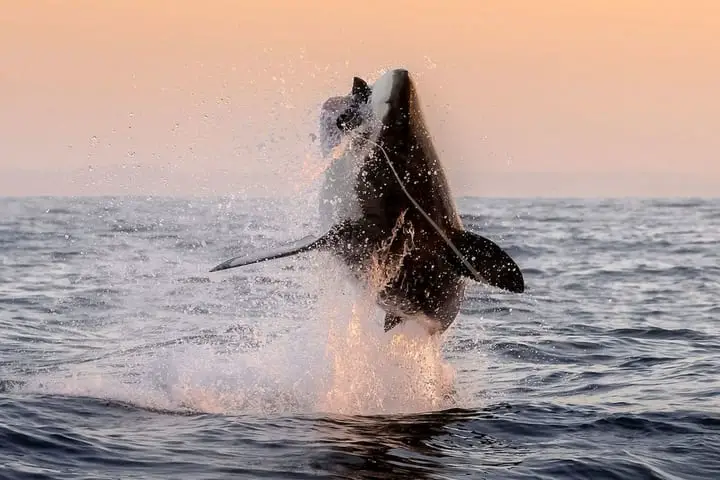
Animalia World
When something with a girth of around four to eight feet jumps from the ocean, you should take notice. In fact, it would probably be hard not to notice. Anyways, the great white is one of the only sharks that can breach from the water. This is likely due to its stupendous ability to swim upwards with amazing speeds.
29. Electrosensation
One of the other amazing facts about sharks is that they can sense the most diminutive electrostatic signal in the water. Since every biological organism uses electric signals to communicate between cells, this is an amazing talent. It also comes in handy when you need to swim several miles to find your nearest meal.

Phys
The ability to sense electrical signals is due to the shark’s nose—a set of receptors called ampullae of Lorenzini. These ampullae enable the shark to detect these most tiny signals. This is in fact one reason why experts say to attack the shark’s nose if it comes chomping in your direction: it has an extremely sensitive nose.
30. Conclusion
So Mr. Ming escaped to dive another day. And, being the sterling and incorrigible character that he is, he intends to dive another day. Knowing that such an event is unlikely to occur again, he is likely going to be safe on this next dive. He will, however, want to be clear on where exactly the cage’s safety hatch is.

DailyMail
The moral of the story, then, is that sharks are dangerous, but not that dangerous. You can, in other words, rest assured that the odds of you getting eaten by one are very low. And, more than that, they will likely ignore you if you don’t look like a tasty pinniped popsicle. So just try your hardest not to look like a seal.